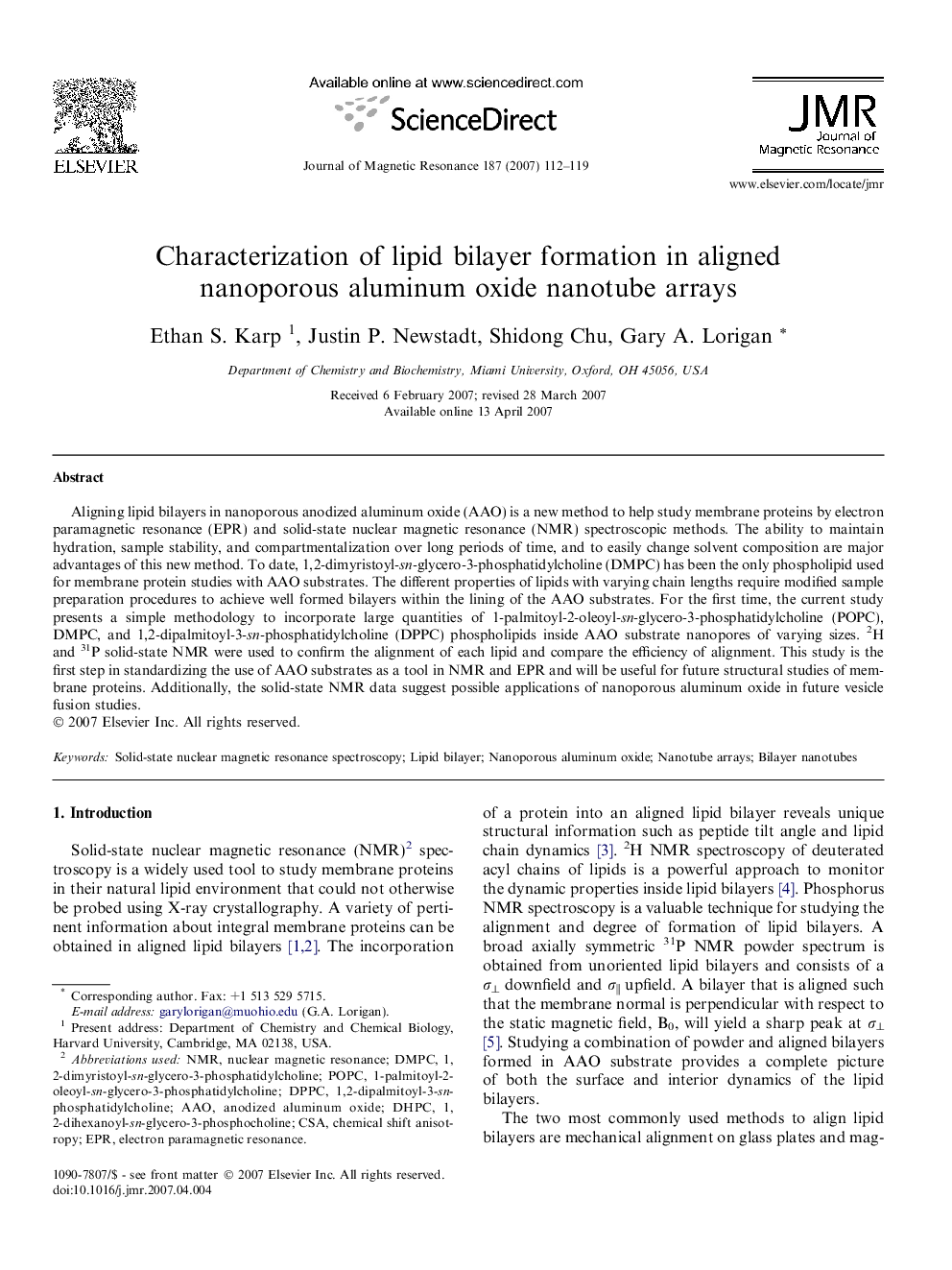| Article ID | Journal | Published Year | Pages | File Type |
|---|---|---|---|---|
| 5407361 | Journal of Magnetic Resonance | 2007 | 8 Pages |
Abstract
Aligning lipid bilayers in nanoporous anodized aluminum oxide (AAO) is a new method to help study membrane proteins by electron paramagnetic resonance (EPR) and solid-state nuclear magnetic resonance (NMR) spectroscopic methods. The ability to maintain hydration, sample stability, and compartmentalization over long periods of time, and to easily change solvent composition are major advantages of this new method. To date, 1,2-dimyristoyl-sn-glycero-3-phosphatidylcholine (DMPC) has been the only phospholipid used for membrane protein studies with AAO substrates. The different properties of lipids with varying chain lengths require modified sample preparation procedures to achieve well formed bilayers within the lining of the AAO substrates. For the first time, the current study presents a simple methodology to incorporate large quantities of 1-palmitoyl-2-oleoyl-sn-glycero-3-phosphatidylcholine (POPC), DMPC, and 1,2-dipalmitoyl-3-sn-phosphatidylcholine (DPPC) phospholipids inside AAO substrate nanopores of varying sizes. 2H and 31P solid-state NMR were used to confirm the alignment of each lipid and compare the efficiency of alignment. This study is the first step in standardizing the use of AAO substrates as a tool in NMR and EPR and will be useful for future structural studies of membrane proteins. Additionally, the solid-state NMR data suggest possible applications of nanoporous aluminum oxide in future vesicle fusion studies.
Related Topics
Physical Sciences and Engineering
Chemistry
Physical and Theoretical Chemistry
Authors
Ethan S. Karp, Justin P. Newstadt, Shidong Chu, Gary A. Lorigan,
